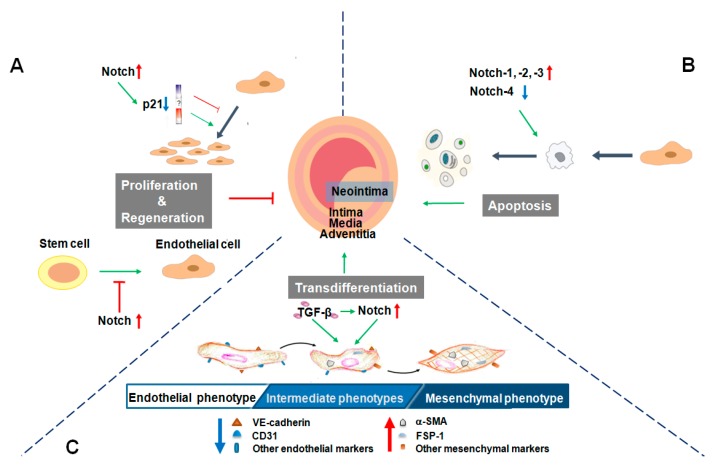Figure 2.
Notch signaling modulates endothelial cells’ (EC) fate associated with neointimal hyperplasia. (A) EC proliferation reduces neointimal hyperplasia. Notch signaling may have dual function in EC proliferation, which is dependent on the relative level of p21 expression. If the expression of p21 is above the level, Notch activation inhibits EC proliferation, however, ECs grow and proliferate when the expression of p21 is below the level. In addition, activation of Notch blocks EC regeneration and induces neointimal hyperplasia; (B) EC apoptosis contributes to neointimal hyperplasia. Upregulation of Notch-1, Notch-2, Notch-3 and downregulation of Notch-4, promote EC apoptosis, which further promotes neointimal hyperplasia; (C) Endothelial-mesenchymal transition (EndMT) contributes to neointimal hyperplasia. Notch activation can trigger EndMT and promote neointimal hyperplasia. The canonical EndMT inducer TGF-β (transforming growth factor-β) also can activate the Notch signaling pathway. FSP-1, fibroblast-specific protein 1; CD31, also known as platelet endothelial cell adhesion molecule-1 (PECAM-1).

